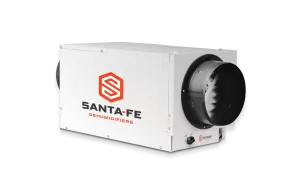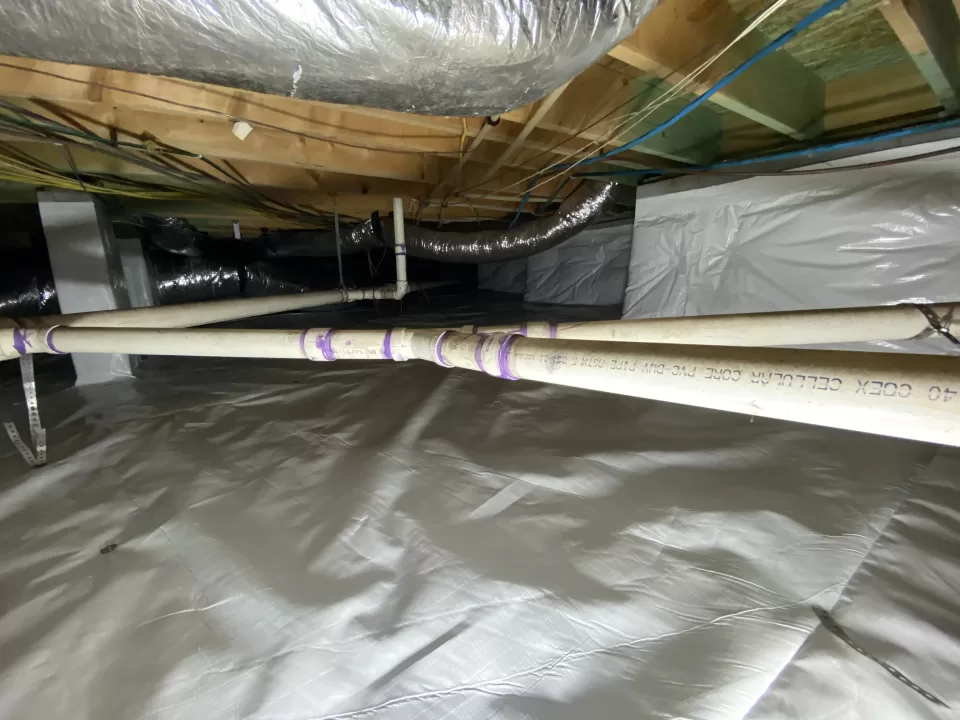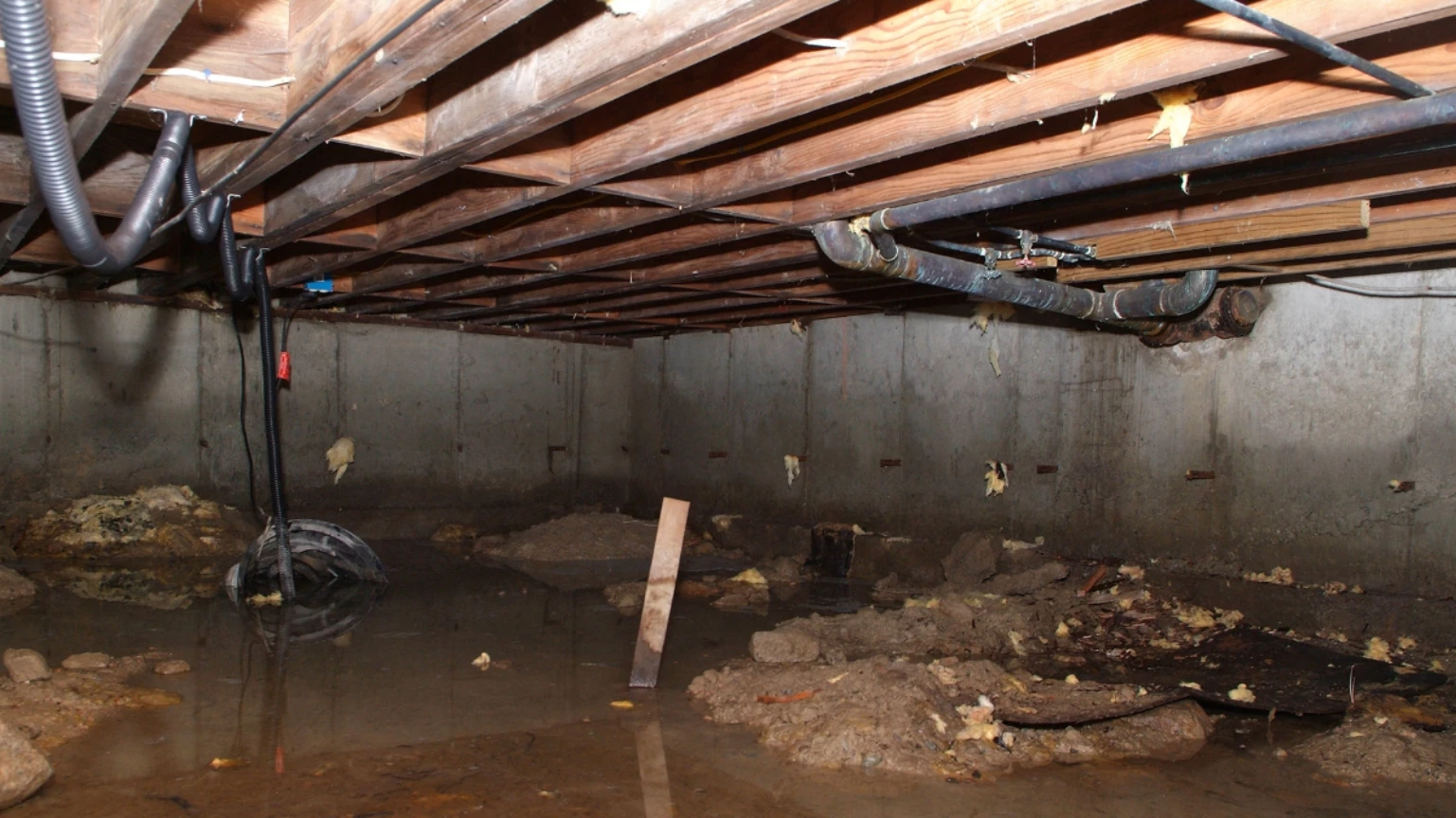A crawlspace dehumidifier is a device designed to reduce the humidity in an enclosed space, such as basements and attics. A properly installed and operating dehumidifier can help protect your home from water damage caused by high humidity levels. It can also make your living spaces more comfortable by reducing musty odors and preventing mold growth.
Freedom Crawlspace Services provide the best crawlspace dehumidifier and other home maintenance services. Our team of experienced professionals understands the importance of keeping your space dry, healthy, and comfortable.

Reasons To Install a Crawlspace Dehumidifier
Dehumidifier Vs. Crawlspace Vapor Barrier Vs. Crawlspace Encapsulation
Several options are available when it comes to improving the air quality of your basement or crawlspace. These include using a dehumidifier, installing a vapor barrier, or encapsulating the entire space. Each option has its advantages and drawbacks; which is best for you depends on your specific needs.
Crawlspace Vapor Barrier
Vapor barriers work by preventing moisture from entering the space in the first place. These barriers are physical barriers between your home and the humid air outside. Vapor barriers are an effective way to keep moisture out of your basement or crawlspace, but they can be difficult and time-consuming to install.
Crawlspace Encapsulation
Encapsulating a basement or crawlspace involves completely enclosing the entire space in a vapor barrier. This seals off all potential sources of moisture, including from underneath the house. Crawlspace encapsulation effectively reduces humidity levels and prevents mold growth, but it can be very costly and time-consuming to install.
Which is Best for You?
When deciding which option is best for you, it’s important to consider your budget, the size of the space you’re trying to cover, and how much moisture you’re dealing with.
If you have a large crawlspace or basement prone to high humidity levels, then encapsulation may be your best option. If you’re on a tight budget and only need to reduce humidity levels in a small area, then a dehumidifier or vapor barrier may be the way to go.
Ultimately, it’s important to choose an option that fits you. At Freedom Crawlspace Services, we’re here to provide you with the right knowledge on what to choose.
How to Install a Crawlspace Dehumidifier
Installing a crawlspace dehumidifier can help control moisture levels and improve the overall condition of your crawlspace.
Here are the steps you’ll need to take:
- Locate an area in your crawlspace where you can place your dehumidifier and measure out a space for it to fit snugly. Make sure there is room for air to flow around the dehumidifier, as this will ensure proper operation.
- Place your dehumidifier in the prepared space and make sure it is level and secure before moving on.
- Measure out an area for your drain line to run from the back of the dehumidifier and into a nearby floor drain, sump pump, or other suitable location.
- Run the drain line from the back of the dehumidifier to the chosen destination and secure it in place with clamps, as needed.
- Connect your dehumidifier to a nearby electrical outlet using an appropriately-sized extension cord or dedicated power supply. Make sure that the connection is secure and there’s no potential for it to become disconnected over time.
- Turn the dehumidifier on and adjust the settings as needed. Make sure that you check back periodically to make sure the settings are still set correctly, especially if your humidity levels change significantly.
- With your dehumidifier installed, it’s important to keep an eye on its function and performance. Make sure that the drain line is draining properly and that there are no leaks or other issues with the dehumidifier itself.
Best Crawlspace Dehumidifiers
Our company is the most trusted name in the crawlspace industry in Charlotte, North Carolina, and for many years, we have collaborated with a wide variety of crawlspace dehumidifier manufacturers.
Santa Fe Dehumidifiers
But when it comes to energy economy and performance, Santa Fe’s top-of-the-line dehumidifiers for residential and commercial properties are unmatched by anything else on the market.
Santa Fe dehumidifiers, which keep excessive moisture at bay regardless of the structure of your crawlspace, are now ranked as the market’s most efficient crawlspace dehumidifiers in terms of energy efficiency.
Here’s why Santa Fe dehumidifiers are the best:
- huge pint capacity
- are easy to drain
- have a variety of installation options
- every model is Energy Star-qualified (saves you on energy bills)
- fully customizable
- can operate as a freestanding or ducted model
- highly flexible
With the right dehumidifier, you can rest assured that your crawlspace will remain dry and healthy. At Freedom Crawlspace Services, we will make sure to provide you with the right information you need.
Call us if you need a dehumidifier installed today!
How Much Energy Does a Dehumidifier Use?
Dehumidifiers are often used in homes and businesses to reduce the amount of moisture in the air. This can help reduce the risk of mold, mildew, or other moisture-related issues from developing. But how much energy does a dehumidifier use?
The amount of energy that a dehumidifier consumes depends on the size and type of unit you are using. Generally speaking, a standard 20-pint (2.5 gallon) portable dehumidifier will use approximately 400 to 600 watts per hour when running.
For reference, this is roughly equivalent to the electricity used by two 100 watt light bulbs running continuously for the same time period. Smaller and/or more efficient models can consume significantly less energy than this – between 50 and 200 watts per hour – but it really depends on what type of model you have.
It’s also important to take into account the cost of electricity in your area when considering how much energy a dehumidifier uses. If your electric rate is higher than average, your monthly cost for running the dehumidifier will be higher as well.
In addition to energy costs, you should also consider how much noise the dehumidifier makes when it’s running. Some models are quieter than others and can be run without disturbing anyone in the house or workplace. If the noise from a unit is too loud, it may be worth it to invest in a quieter model.
Overall, a dehumidifier is a great tool for improving air quality and reducing moisture levels in any space. By taking into account all of the factors mentioned above, you’ll be able to make an informed decision about which model is right for you and find a unit that uses the least amount of energy possible.
With the right dehumidifier, you can save time, money, and energy while improving your indoor air quality.

Do’s & Don’ts of a Crawlspace Dehumidifier
When using a crawlspace dehumidifier, remember several do’s and don’ts to ensure its effective and safe operation. Here are some important guidelines:
Do’s:
- Set the appropriate humidity level: Set the dehumidifier to maintain the desired humidity level in your crawlspace. The ideal range is typically between 45% and 50% relative humidity, but it may vary depending on your needs and local climate conditions.
- Monitor and adjust settings: Regularly check the dehumidifier’s settings and monitor the humidity levels in the crawlspace. Adjust the settings to maintain the desired humidity level and ensure optimal moisture control.
- Ensure proper drainage: Ensure the dehumidifier’s drainage system is functioning correctly. Whether through a gravity-based drain or a pump-assisted system, ensure the collected water is effectively drained away from the crawlspace to prevent water accumulation.
- Regular maintenance: Follow the manufacturer’s recommendations for regular maintenance tasks. This may include cleaning or replacing filters, inspecting and cleaning the coils, and checking for any signs of damage or wear.
- Keep the crawlspace well-ventilated: Maintain adequate ventilation in the crawlspace. If your crawlspace has vents, ensure they are open and functioning properly to allow air circulation. Proper ventilation helps in drying out the space and preventing stagnant air.
Don’ts:
- Keep the humidity level low: While it’s important to control humidity, setting the dehumidifier to excessively low can lead to overly dry conditions. Extremely low humidity can cause issues such as excessive drying of wooden structures or cracking of certain materials.
- Pay attention to drainage maintenance: Regularly check the drainage system to ensure it is clear and functioning properly. Clear any clogs or obstructions that may impede the drainage flow. Neglecting proper drainage maintenance can lead to water buildup and potential damage.
- Don’t overload the electrical circuit: Ensure the dehumidifier is plugged into a grounded electrical outlet with sufficient capacity to handle its power requirements. Overloading the circuit can lead to electrical issues or pose a safety risk.
- Place the dehumidifier away from water sources: Avoid placing the dehumidifier near water sources such as leaking pipes or drains. Keep it away from potential water hazards to prevent damage to the unit or electrical risks.
- Don’t ignore unusual sounds or malfunctions: Pay attention to any unusual sounds, vibrations, or malfunctions with the dehumidifier. If you notice anything unusual, immediately turn off the unit and consult the manufacturer’s troubleshooting guide or seek professional assistance.
Following these do’s and don’ts will help ensure that your crawlspace dehumidifier operates effectively, maintains the desired humidity levels, and contributes to a healthier and more controlled crawlspace environment. network error
Don’t let excess moisture compromise the integrity of your home. Take action today by calling Freedom Crawlspace Services to schedule a consultation and ensure a dry and healthy crawlspace for years to come.

